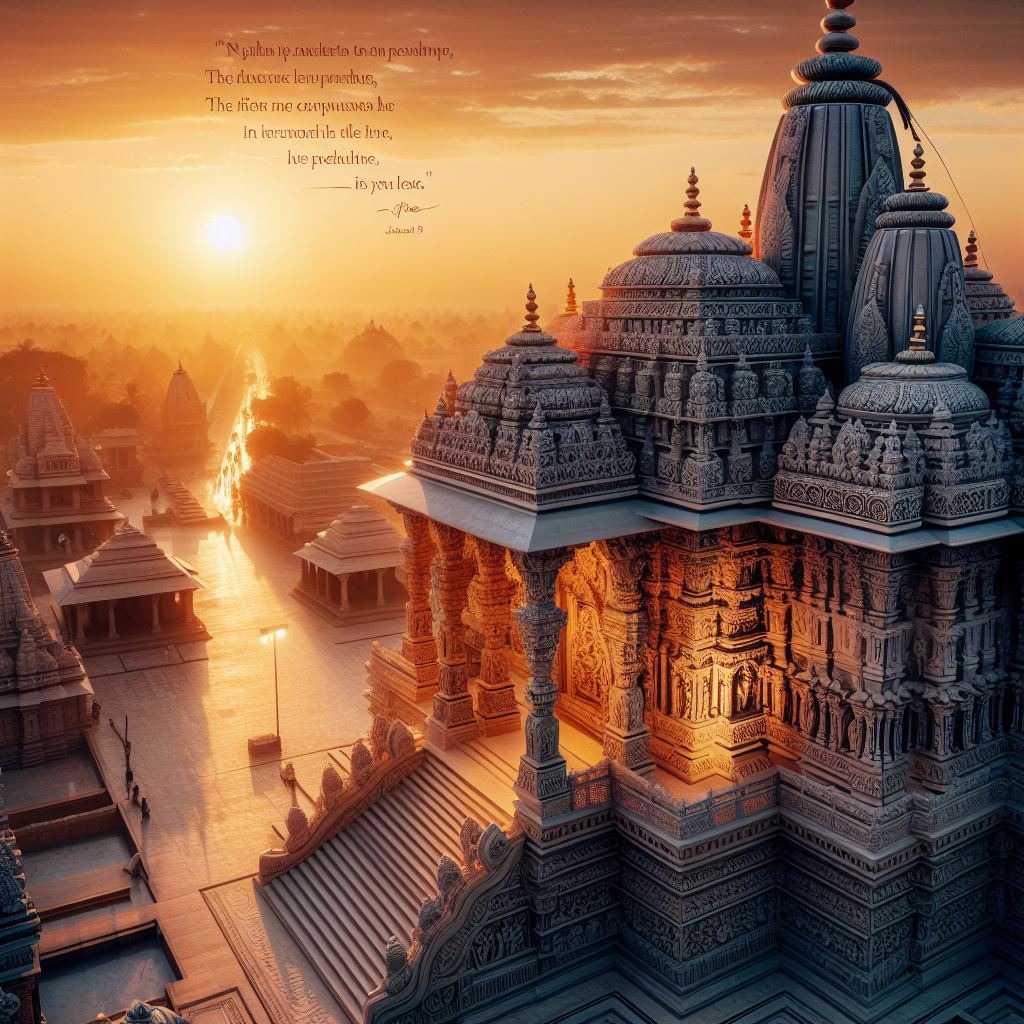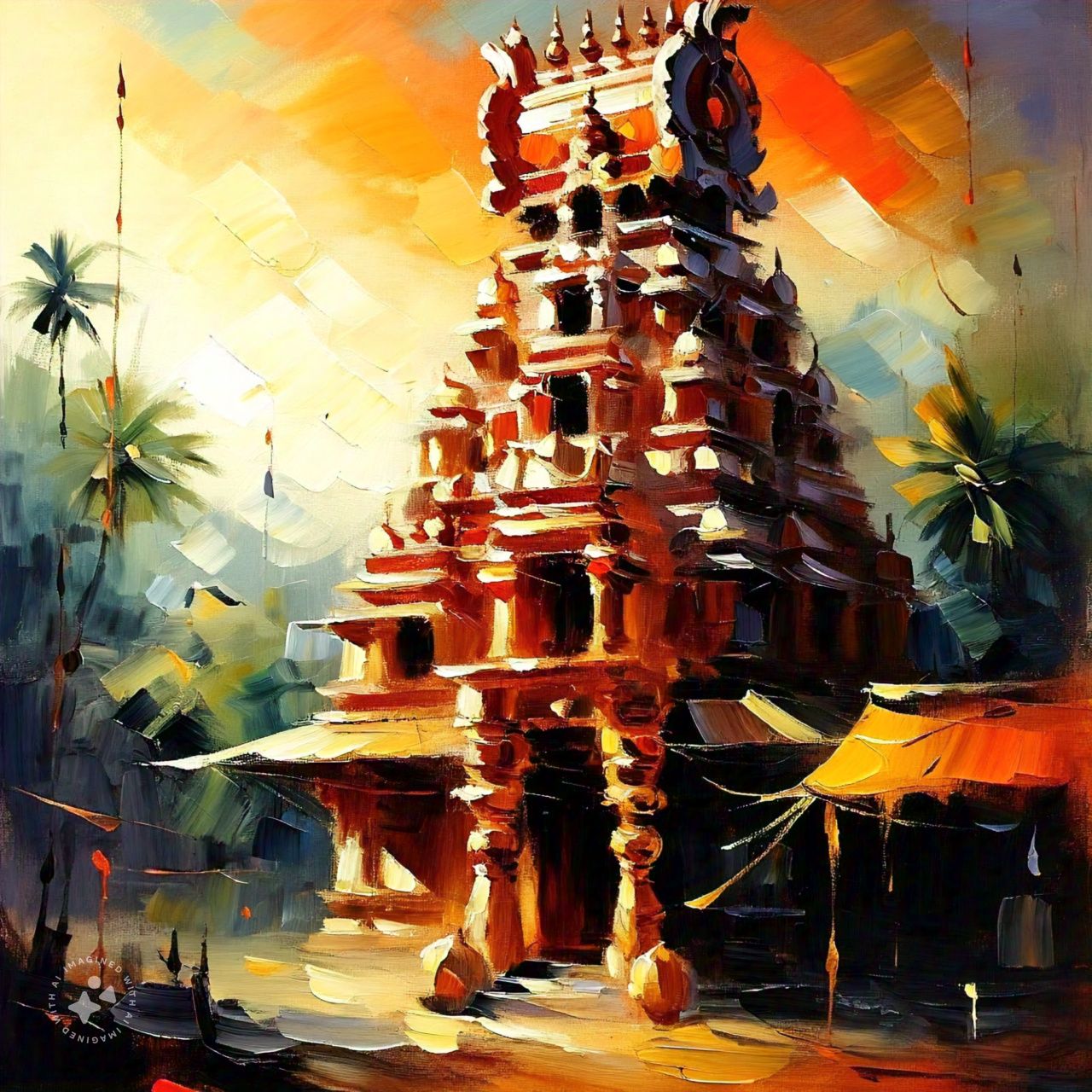Hindu temples are not just places of worship; they are architectural marvels that embody deep spiritual symbolism. One of the most fascinating aspects of Hindu temple architecture is its representation of the human body. This concept, rooted in ancient texts and traditions, reflects the belief that the divine resides within each individual. In this article, we will explore the intricate symbolism of Hindu temples and how they mirror the human form.
The Concept of Vastu Shastra
Vastu Shastra, the ancient Indian science of architecture, plays a crucial role in the design and construction of Hindu temples. According to Vastu Shastra, the layout and structure of a temple should align with cosmic principles and natural laws. This alignment ensures that the temple becomes a conduit for divine energy, creating a harmonious environment for worshippers.
The Human Body as a Temple
The idea that the human body is a temple is deeply ingrained in Hindu philosophy. This belief is reflected in the design of Hindu temples, where each architectural element corresponds to a part of the human body. Let’s delve into the various components of a Hindu temple and their symbolic significance.

Garbhagriha (Sanctum Sanctorum)
The Garbhagriha, or the sanctum sanctorum, is the innermost chamber of the temple where the main deity resides. This sacred space represents the head, specifically the brain, which is considered the seat of consciousness. Just as the brain controls the functions of the body, the Garbhagriha is the spiritual center of the temple, radiating divine energy.
Shikhara/Vimana (Tower)
The Shikhara or Vimana is the towering structure above the Garbhagriha. It symbolizes the crown or the top of the head, reaching towards the heavens. The height and grandeur of the Shikhara signify the aspiration of the human soul to connect with the divine. It serves as a visual reminder of the temple’s sacred purpose.
Mandapa (Hall)
The Mandapa is the hall or pavilion where devotees gather for prayers and rituals. This space represents the body, providing a communal area for worship. The Mandapa’s open and spacious design encourages social interaction and collective worship, reflecting the interconnectedness of individuals within the community.
Antarala (Vestibule)
The Antarala, or vestibule, is the transitional space between the Garbhagriha and the Mandapa. It symbolizes the neck, connecting the head (Garbhagriha) to the body (Mandapa). The Antarala serves as a passageway, guiding devotees from the outer world into the sacred inner sanctum.
Pradakshina Patha (Circumambulatory Path)
The Pradakshina Patha is the circumambulatory path that surrounds the Garbhagriha. Devotees walk clockwise around this path as a form of worship, symbolizing the circulatory system. This ritual represents the flow of energy within the temple and the human body, emphasizing the continuous cycle of life and devotion.
Gopuram (Gateway Tower)
The Gopuram is the grand entrance tower of the temple complex. It represents the feet, marking the threshold between the mundane world and the sacred space of the temple. The Gopuram’s intricate carvings and towering presence invite devotees to leave behind their worldly concerns and enter a realm of spiritual contemplation.

Symbolism in Temple Rituals
The symbolism of the human body extends beyond the architectural elements of the temple to the rituals performed within its sacred precincts. Each ritual is designed to align the devotee’s physical and spiritual energies with the divine presence in the temple.
Abhishekam (Ritual Bathing) – अभिषेक: The ritual bathing of the deity with water, milk, and other sacred substances symbolizes the purification of the body and soul. Just as the deity is cleansed, devotees seek to cleanse themselves of impurities and attain spiritual purity.
Aarti (Offering of Light) – आरती: The offering of light to the deity represents the illumination of the mind and the dispelling of ignorance. The light of the aarti signifies the divine light that guides devotees on their spiritual journey.
Prasadam (Sacred Food Offering) – प्रसाद: The offering of food to the deity and its subsequent distribution to devotees symbolizes the nourishment of the body and soul. Prasadam is considered a divine blessing that sustains both physical and spiritual well-being.
The Spiritual Journey
The design and rituals of Hindu temples are intended to guide devotees on a spiritual journey, mirroring the journey of the soul within the human body. This journey begins at the Gopuram, where devotees leave behind their worldly attachments and enter the sacred space of the temple. As they progress through the Mandapa and Antarala, they prepare themselves for the ultimate encounter with the divine in the Garbhagriha.
The circumambulation of the Pradakshina Patha represents the continuous cycle of life, death, and rebirth, emphasizing the eternal nature of the soul. The ascent of the Shikhara symbolizes the soul’s aspiration to reach higher states of consciousness and unite with the divine.
The Universal Temple
The symbolism of Hindu temples as representations of the human body is not limited to any specific region or style of architecture. Whether it is the towering temples of South India, the intricately carved temples of North India, or the cave temples of Maharashtra, the underlying principles of Vastu Shastra and the human body symbolism remain consistent.
This universal symbolism reflects the inclusive nature of Hinduism, which recognizes the divine presence within every individual. By aligning the temple’s architecture with the human form, Hinduism emphasizes the interconnectedness of the physical and spiritual realms.
Hindu temples are more than just places of worship; they are embodiments of profound spiritual symbolism. The representation of the human body in temple architecture highlights the belief that the divine resides within each individual. Through their design and rituals, Hindu temples guide devotees on a journey of self-discovery and spiritual enlightenment.
The intricate symbolism of Hindu temples serves as a reminder of the eternal connection between the human and the divine. As devotees enter the sacred space of the temple, they are invited to embark on a transformative journey, seeking to align their physical and spiritual energies with the divine presence within.
The symbolism of Hindu temples as representations of the human body is a testament to the depth and richness of Hindu philosophy. It reflects the belief that the divine is not separate from the human experience but is an integral part of it. By understanding and appreciating this symbolism, devotees can deepen their spiritual practice and connect more profoundly with the divine essence within themselves.



